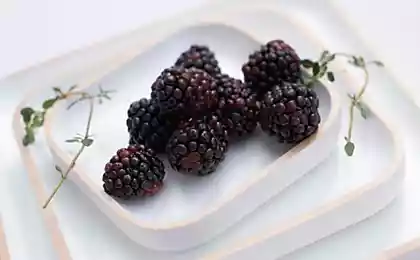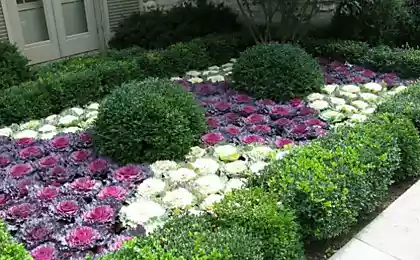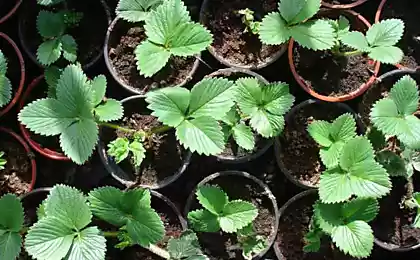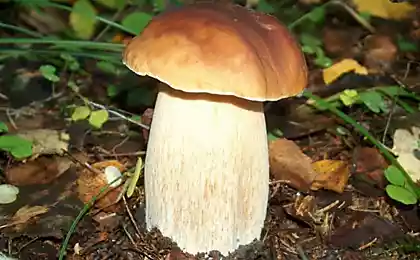491
Mulberry: the cultivation and care
Mulberry tree, the mulberry, mulberry
It is not called, and the cultivation and care will not change. There are two different names for one and the same amazing plant. In China it is cultivated more than 5 thousand years ago. Attracted the attention not only of mulberries but the leaves. Because the leaves fed the silkworms that are of great importance in the national economy (production of silk).
The fruit is a false drupe often called berry that can reach 4 — 5 cm in length. Has a pleasant taste, the variety of colors and shapes. There is one drawback — poorly stored and almost impossible to transport.
In our area (temperate zone of Europe) are the most common two kinds of mulberry – white and black. Specify the name derived not from the color of the berries, and the color of the bark of an adult tree.
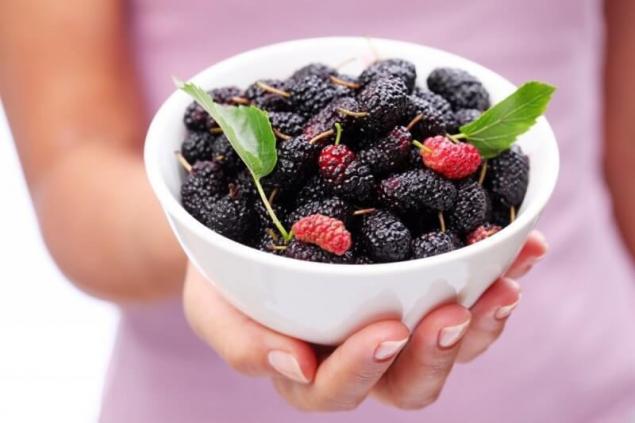
white mulberry bark has bright, greyish, red berries, cream, white, dark, almost black and purple
black mulberry is different and dark crust always has black berries
Planting mulberry
It grows in the wild in Korea and China, occupies the southern cultural regions. In the cultivation of mulberry consider that it is light-requiring, drought resistant, can withstand freezing down to — 30C. On poor soils, grows worse and poorly rooted. Late spring frost damage all parts, even the young shoots. Varieties with large buds carry them easier. And quickly recover and grow back.
The planting of the mulberry is carried out at a distance of 5 meters from each other. When the sectional form of cultivation is the distance between the ranks will be less meter 3. Bushes placed in a row in 50 cm In such a dense planting of mulberry trees to form a hedge. The planting hole is prepared according to the General rules with the use of mineral fertilizers, humus, compost. Root collar not to bury, this often leads to the death if excessive humidity.
Formation, pruning mulberry tree
We are accustomed to the fact that mulberry is a large tree, holding his crown of a huge area. Often in villages, the crown covers the entire yard or garden area. The height is 18 meters. These dimensions are scary. But we will not despair, because there are many less familiar forms of mulberry cultivation – spherical, pyramidal, weeping. They decorative look, to give a tasty and useful berries, take up little space on the site. For feeding silkworms need leaves and berries may not be interested. Then grow a mulberry, first and foremost, those forms that have juicy and large leaves. Often with trimmings give the mulberry Bush shape and cut for feeding insects leaves manually.
Pruning of mulberry, the formation does not have any features. The trunk leave from 50 cm up to six metres. And thus the crown will be higher or lower depending on the trunk. Conduct thinning, sanitary cutting. Over time, you need to clean the trunk from the aging of the crust. All that spoils the shape of the crown is removed. By cropping do to the lower branches do not lie on the ground (prone to sagging), or an in support.
Main pruning is carried out in late winter or early spring. Sometimes in the midst of forming a thinning, shortening of the shoots in late July.
Mulberry – growing and care
Speaking about watering, the ground received moisture needs in the first half of the summer. At this time fertilizer application. You can use not only a complete fertilizer, but diluted the fermented slurry from manure or bird droppings. Since the second half of summer watering was stopped. This will help the wood to ripen well, the tree had better bear the cold winter. During this period, include watering only in case of extreme heat, drought. This will help to avoid premature dropping of leaves, that of the latter is often observed in summer in the South.
Often people complain that a few years to grow mulberry trees, caring for it is good, the tree grows, and there is no fruit. It is not in terms of growth or lack of insects. Pollination of mulberry insects do not need enough wind. The mulberry tree has male and female flowers. Therefore, isolated dioecious and monoecious plants. Have monoecious on the same plant are male and female flowers. But there are dioecious trees with male and female flowers. If we assume that fruiting occurs approximately 5 years after planting, it then becomes clear, as is your tree, will there be fruit.
This trouble can be avoided by growing mulberry trees not from seeds, but reproducing by cuttings or by grafting. The grafting can be combined on a single instance branches of trees with male and female flowers. This is sufficient for normal pollination, and therefore to obtain juicy and delicious mulberries.
Vaccination can be done in the early or mid-April (for a week or two before or during flowering). Cuttings should be harvested in February-March and stored in the refrigerator or cellar. In a pinch you can cut the stalks for grafting directly from the tree, but before Bud break. The vaccine is made just like other fruit plants. Use vegetative (long) stems with well-formed buds, not fruit (cropped). Grafting these cuttings are cut from fruit trees, accelerates fructification.
It is possible to be inoculated by budding. In this case, a kidney with a shield (with a one-year long escape, same as for grafting) is inserted under the bark.
Male inflorescence
Budding can be done in the spring (at the same time as inoculation with the handle) and summer (dormant buds) is usually from 25 July 20-25 Aug.
Instill also by growth shoots with a length of 10-12 cm With privatnogo of the stalk is cut the terminal Bud and plant in T-shaped incision of the rootstock. This method of inoculation allows to speed up the entry into fruiting in 1-2 years.
As the plant is old enough vaccination should be done 2-3 branches.
After cuttings or eyes get accustomed, it will be possible to form a plant of new shoots, gradually removing the remaining unnecessary shoots of the rootstock. So, after two or three years You will have podonosma large-fruited mulberry, the berries of which are delicious and very useful. Not in vain in Central Asia, the mulberry is called respect "Shah-tut" — "Tsar berry". A more accurate name for it is hard to think!
The life expectancy of some specimens up to 300 years or more. Therefore, choosing a place to land, I should think. Even if the crown of the mulberry tree will not big, then falling berries can stain walkways, standing underneath benches, clothes, passing people and just dissolve the dirt in the world. As the ground attracts insects, especially flies. Be sure to consider this when selecting locations.
The harvest stretches over time and falls on the first half of the summer. Often during the mass ripening of the mulberries under a tree, stretched fabric, fine mesh or even just put the tape on the ground. This makes it easier to harvest, saves time, and berries are not so dirty. The harvest is used for various preparations for the winter, cooking wine, for medicinal purposes. Planting mulberry, you will never regret it. published
P. S. And remember, only by changing their consumption — together we change the world! © Join us at Facebook , Vkontakte, Odnoklassniki
Source: vk.com/posadisvoiles?w=wall-88938708_3309%2Fall
It is not called, and the cultivation and care will not change. There are two different names for one and the same amazing plant. In China it is cultivated more than 5 thousand years ago. Attracted the attention not only of mulberries but the leaves. Because the leaves fed the silkworms that are of great importance in the national economy (production of silk).
The fruit is a false drupe often called berry that can reach 4 — 5 cm in length. Has a pleasant taste, the variety of colors and shapes. There is one drawback — poorly stored and almost impossible to transport.
In our area (temperate zone of Europe) are the most common two kinds of mulberry – white and black. Specify the name derived not from the color of the berries, and the color of the bark of an adult tree.

white mulberry bark has bright, greyish, red berries, cream, white, dark, almost black and purple
black mulberry is different and dark crust always has black berries
Planting mulberry
It grows in the wild in Korea and China, occupies the southern cultural regions. In the cultivation of mulberry consider that it is light-requiring, drought resistant, can withstand freezing down to — 30C. On poor soils, grows worse and poorly rooted. Late spring frost damage all parts, even the young shoots. Varieties with large buds carry them easier. And quickly recover and grow back.
The planting of the mulberry is carried out at a distance of 5 meters from each other. When the sectional form of cultivation is the distance between the ranks will be less meter 3. Bushes placed in a row in 50 cm In such a dense planting of mulberry trees to form a hedge. The planting hole is prepared according to the General rules with the use of mineral fertilizers, humus, compost. Root collar not to bury, this often leads to the death if excessive humidity.
Formation, pruning mulberry tree
We are accustomed to the fact that mulberry is a large tree, holding his crown of a huge area. Often in villages, the crown covers the entire yard or garden area. The height is 18 meters. These dimensions are scary. But we will not despair, because there are many less familiar forms of mulberry cultivation – spherical, pyramidal, weeping. They decorative look, to give a tasty and useful berries, take up little space on the site. For feeding silkworms need leaves and berries may not be interested. Then grow a mulberry, first and foremost, those forms that have juicy and large leaves. Often with trimmings give the mulberry Bush shape and cut for feeding insects leaves manually.
Pruning of mulberry, the formation does not have any features. The trunk leave from 50 cm up to six metres. And thus the crown will be higher or lower depending on the trunk. Conduct thinning, sanitary cutting. Over time, you need to clean the trunk from the aging of the crust. All that spoils the shape of the crown is removed. By cropping do to the lower branches do not lie on the ground (prone to sagging), or an in support.
Main pruning is carried out in late winter or early spring. Sometimes in the midst of forming a thinning, shortening of the shoots in late July.
Mulberry – growing and care
Speaking about watering, the ground received moisture needs in the first half of the summer. At this time fertilizer application. You can use not only a complete fertilizer, but diluted the fermented slurry from manure or bird droppings. Since the second half of summer watering was stopped. This will help the wood to ripen well, the tree had better bear the cold winter. During this period, include watering only in case of extreme heat, drought. This will help to avoid premature dropping of leaves, that of the latter is often observed in summer in the South.
Often people complain that a few years to grow mulberry trees, caring for it is good, the tree grows, and there is no fruit. It is not in terms of growth or lack of insects. Pollination of mulberry insects do not need enough wind. The mulberry tree has male and female flowers. Therefore, isolated dioecious and monoecious plants. Have monoecious on the same plant are male and female flowers. But there are dioecious trees with male and female flowers. If we assume that fruiting occurs approximately 5 years after planting, it then becomes clear, as is your tree, will there be fruit.
This trouble can be avoided by growing mulberry trees not from seeds, but reproducing by cuttings or by grafting. The grafting can be combined on a single instance branches of trees with male and female flowers. This is sufficient for normal pollination, and therefore to obtain juicy and delicious mulberries.
Vaccination can be done in the early or mid-April (for a week or two before or during flowering). Cuttings should be harvested in February-March and stored in the refrigerator or cellar. In a pinch you can cut the stalks for grafting directly from the tree, but before Bud break. The vaccine is made just like other fruit plants. Use vegetative (long) stems with well-formed buds, not fruit (cropped). Grafting these cuttings are cut from fruit trees, accelerates fructification.
It is possible to be inoculated by budding. In this case, a kidney with a shield (with a one-year long escape, same as for grafting) is inserted under the bark.
Male inflorescence
Budding can be done in the spring (at the same time as inoculation with the handle) and summer (dormant buds) is usually from 25 July 20-25 Aug.
Instill also by growth shoots with a length of 10-12 cm With privatnogo of the stalk is cut the terminal Bud and plant in T-shaped incision of the rootstock. This method of inoculation allows to speed up the entry into fruiting in 1-2 years.
As the plant is old enough vaccination should be done 2-3 branches.
After cuttings or eyes get accustomed, it will be possible to form a plant of new shoots, gradually removing the remaining unnecessary shoots of the rootstock. So, after two or three years You will have podonosma large-fruited mulberry, the berries of which are delicious and very useful. Not in vain in Central Asia, the mulberry is called respect "Shah-tut" — "Tsar berry". A more accurate name for it is hard to think!
The life expectancy of some specimens up to 300 years or more. Therefore, choosing a place to land, I should think. Even if the crown of the mulberry tree will not big, then falling berries can stain walkways, standing underneath benches, clothes, passing people and just dissolve the dirt in the world. As the ground attracts insects, especially flies. Be sure to consider this when selecting locations.
The harvest stretches over time and falls on the first half of the summer. Often during the mass ripening of the mulberries under a tree, stretched fabric, fine mesh or even just put the tape on the ground. This makes it easier to harvest, saves time, and berries are not so dirty. The harvest is used for various preparations for the winter, cooking wine, for medicinal purposes. Planting mulberry, you will never regret it. published
P. S. And remember, only by changing their consumption — together we change the world! © Join us at Facebook , Vkontakte, Odnoklassniki
Source: vk.com/posadisvoiles?w=wall-88938708_3309%2Fall








